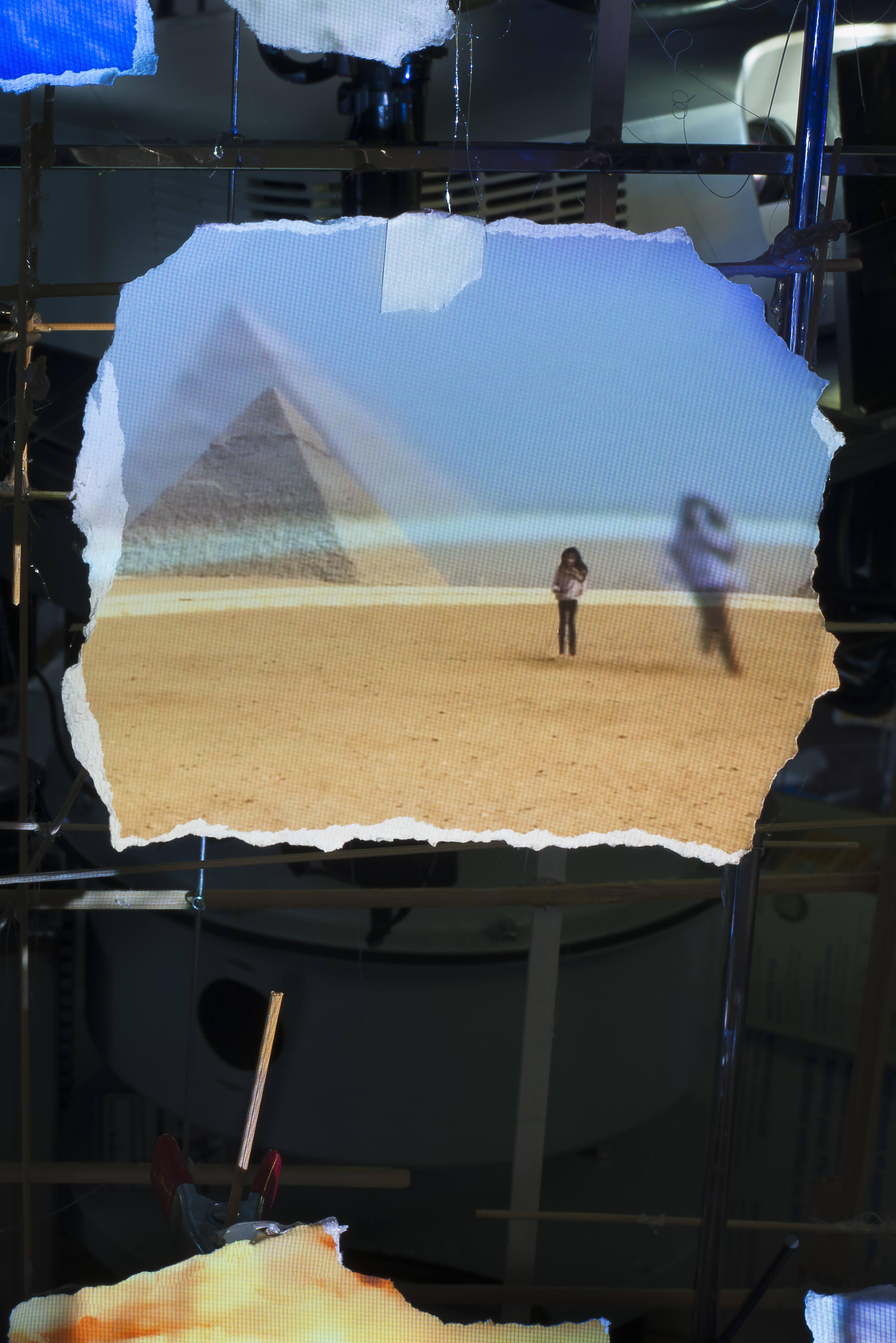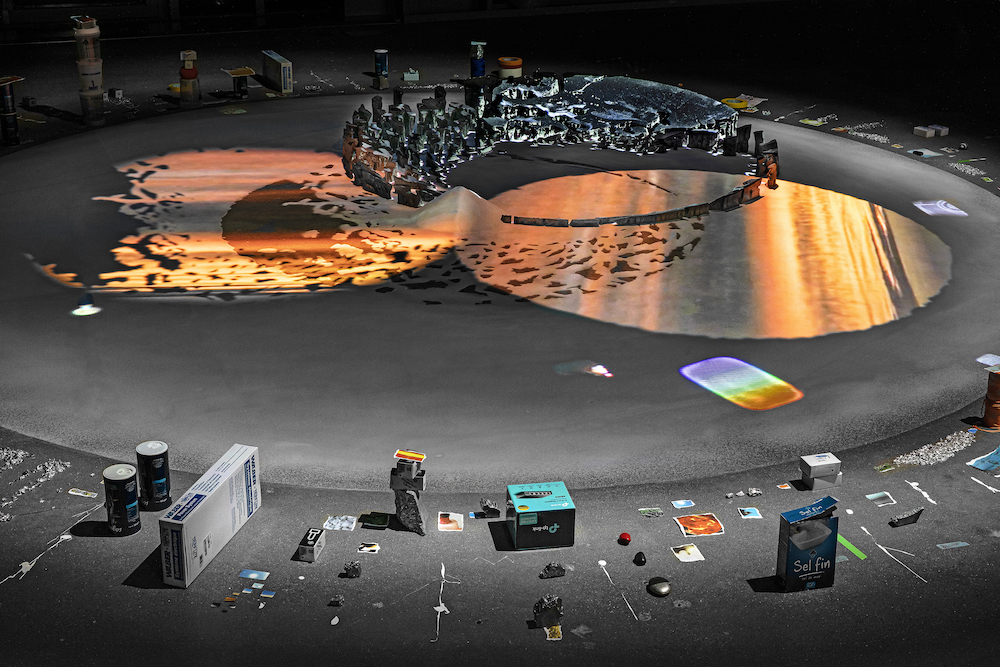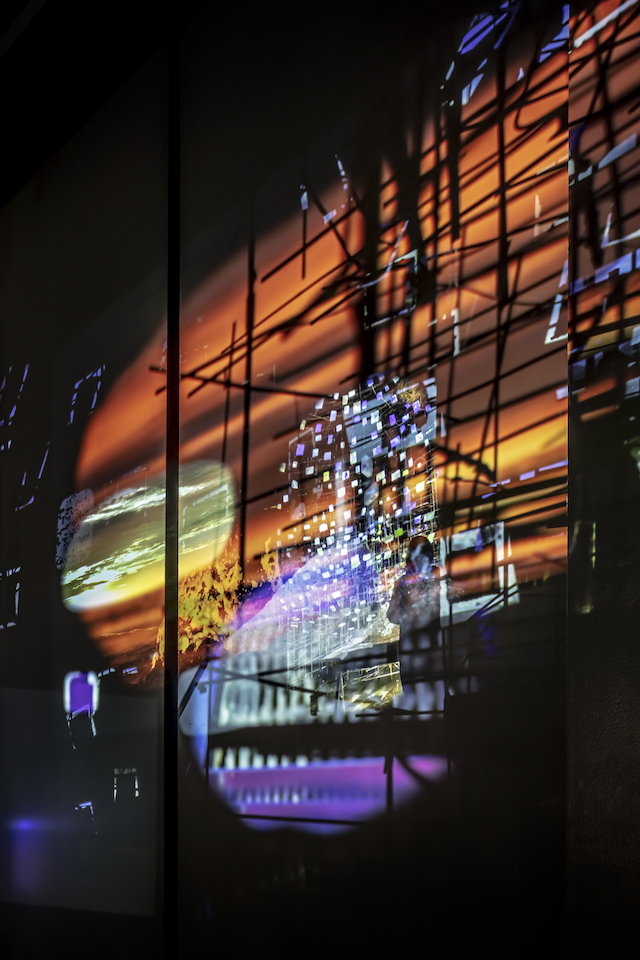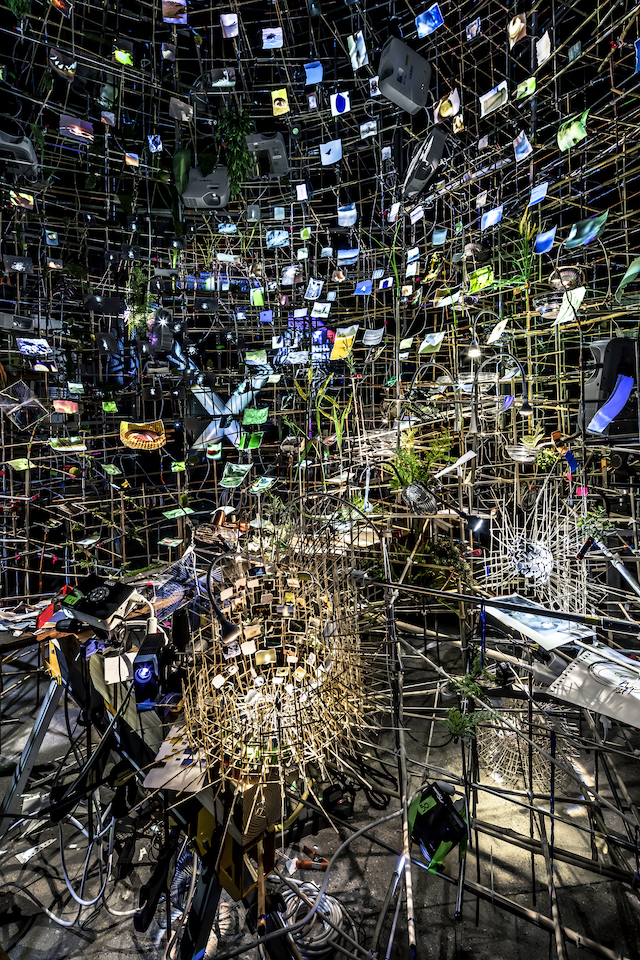In conversation with Fondation Cartier pour l’art contemporain curator Leanne Sacramone

Since the late 1990s, NYC-based artist Sarah Sze has used mixed media to navigate space, time, materials and memory. Using an intricate assemblage of everyday objects, sculpture and fragmented images, Sze’s paintings and installations are often in a state of flux, exposing the fragility and futility of how we make meaning through materials.
Last year, as she was preparing for her second solo show at the Fondation Cartier pour l’art contemporain, Night Into Day, Port spoke to exhibition curator Leanne Sacramone about Sze, altered states and ways of seeing.

What draws you to Sze’s work?
She imbues a myriad of images and objects with a vitality and presence that leads us to look at them in a new way. Sarah often talks about wanting to alternately orient and disorient the viewer, creating moments of anticipation, surprise and discovery. Her works are worlds in and of themselves; they encourage active participation and ask big questions: How does an object acquire value? Where does an artwork begin and where does it end? How do we view and represent reality? What is the human experience of memory?
What will we see in the show?
Sarah’s installations will evolve in dialogue with Jean Nouvel’s glass building, depending on the time of day. Sarah has long been interested in the idea of the sculpture as a tool for measuring time and space, and these works were inspired by the planetarium and the pendulum, scientific instruments that were originally designed to map the cosmos and demonstrate the earth’s rotation.The idea of cyclical time is explored in the larger work, ‘Twice Twilight’, a spherical, skeletal, steel and bamboo structure that evokes our planet. It is composed of photographs, ephemeral objects such as plants and birds’ nests, light, sound, and videos of the natural world projected onto torn pieces of paper: clouds moving, fires burning, geysers erupting, spores growing. In the other gallery space, a pendulum will swing above a reflective concave bowl made from fragments of stainless steel. Various objects, as well as materials that were used in the process of creating the sculpture, will be placed in this installation, giving the impression that you are observing a work in progress. The installation will also include videos showing these same materials in transformation, such as molten metal, as well as videos of the sky captured at different moments of the day. Sarah relishes when something threatens change and teeters between two states – structure and fragility, inside and outside, permanence and impermanence. Both works are concerned with how organic processes reveal temporal cycles – the rotation of the earth, phases of the moon, the passage from night to day – as well as the power of the tactile in an image-saturated world.

What are the consequences of living in such a world?
The show reflects our contemporary visual experience, the overload that many of us are subjected to. We’re constantly engulfed by a flood of images that disrupt our sense of reality, and Sarah explores how this modern experience has created a completely new engagement with time and memory. The Internet has altered our relationship to images – for example, how they’re produced, circulated, communicated; there are now more than 3 billion images shared every day on social media. While analogue photography was intended to help remember scenes of the past for future audiences, many pictures taken today for social media encourage us to imagine and invent the present. Digital photographs have slipped the bounds of materiality, taking on a life of their own outside of the control of the photographer, and she makes us pause to think about that.

Are dedicated spaces, to truly look at images, such as galleries, more necessary as a result?
We’re going so fast, flitting from one task or image to another, that it’s incredibly important to stop and properly look. The pandemic has been an opportunity for many to do exactly that.
How will Jean Nouvel’s iconic building complement the show, and vice versa?
Sarah will play with the transparency of the architecture, transforming the building into a magic lantern by projecting moving images onto the glass walls. As they circulate around the viewer and their shadows, it will recall the zoetrope, the pre-cinematic animation device. Nouvel’s building can already be experienced as a kind of mirage that confuses the senses, not exactly knowing where it starts and ends, so the works will enhance the spatial and perceptual ambiguity inherent in the design.
Night into Day runs from October 2020 to March 2021 at the Fondation Cartier pour l’art contemporain, Paris

This article is taken from issue 27. To buy the issue or subscribe, click here




